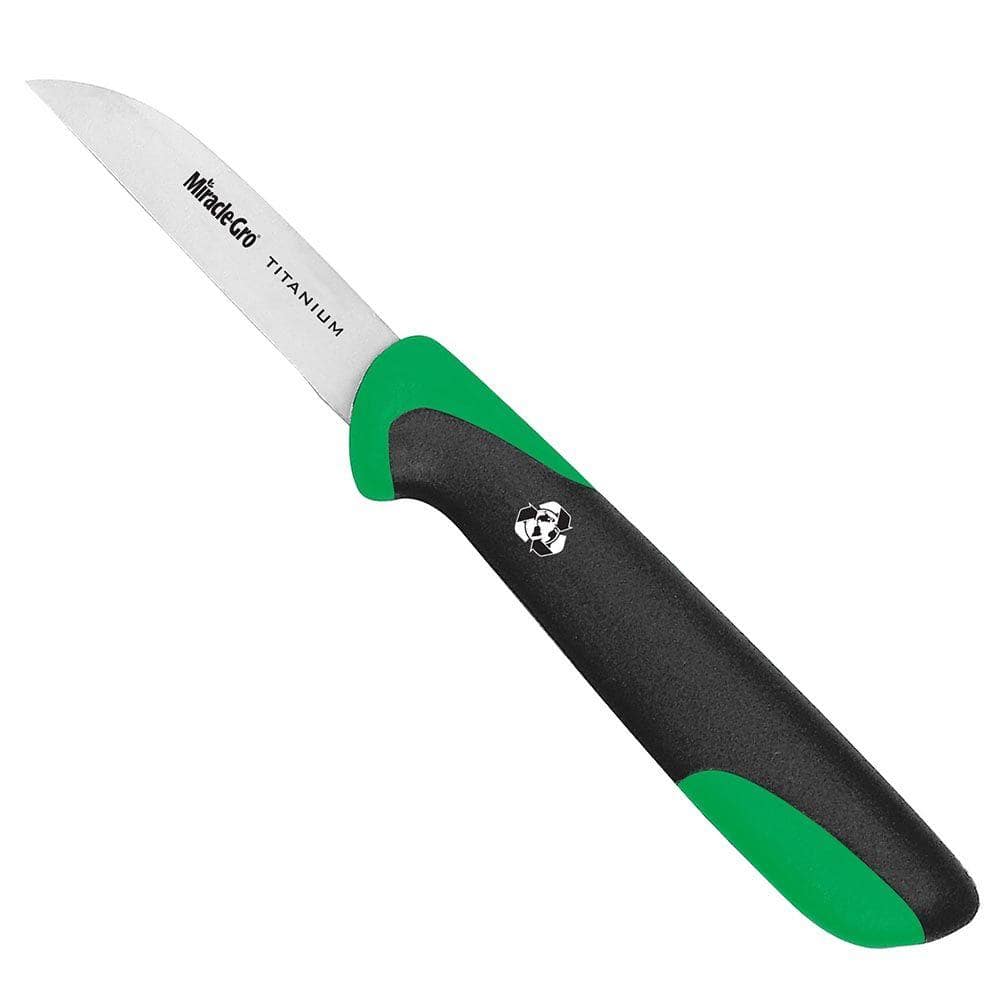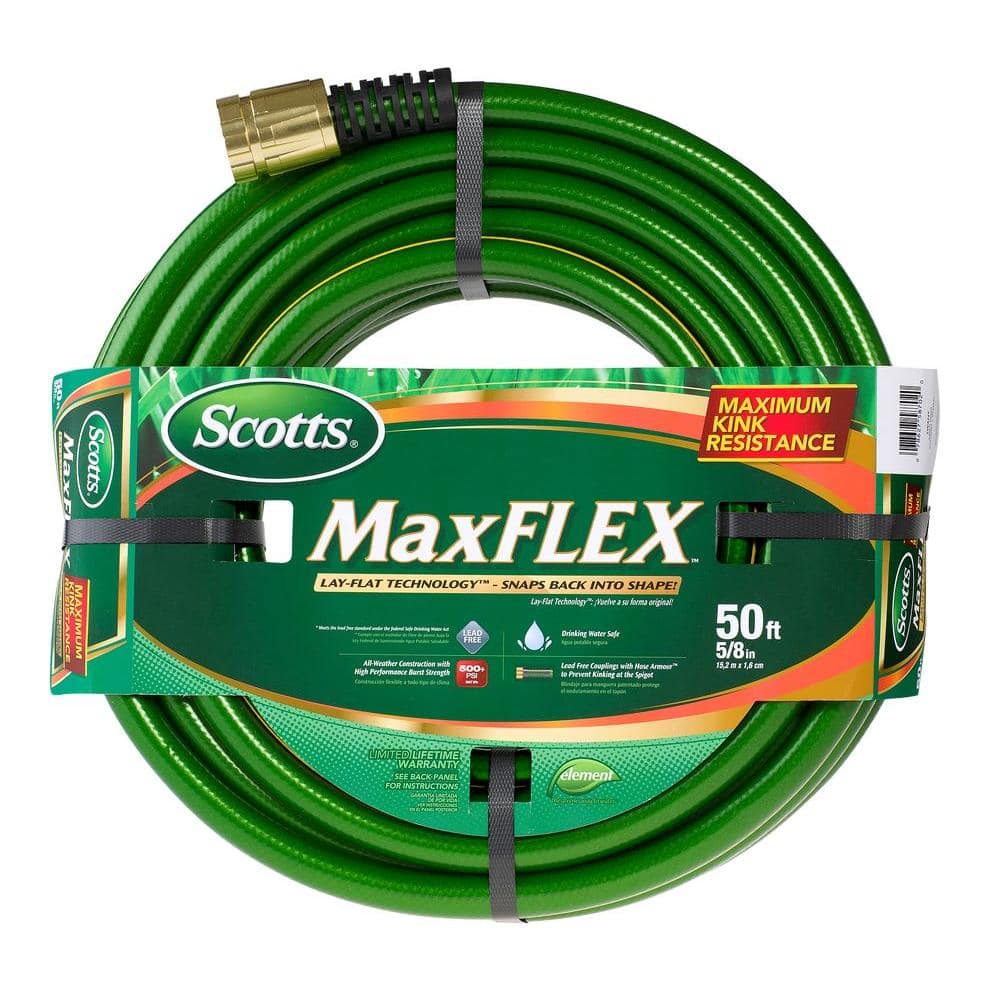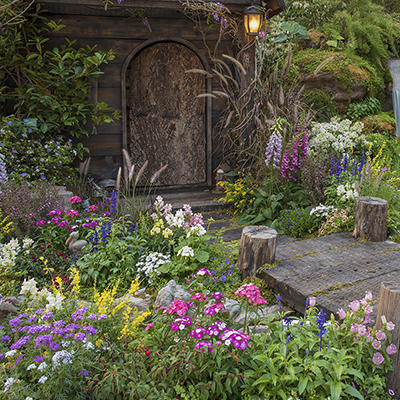7 Ways to Enjoy Your Flower Garden
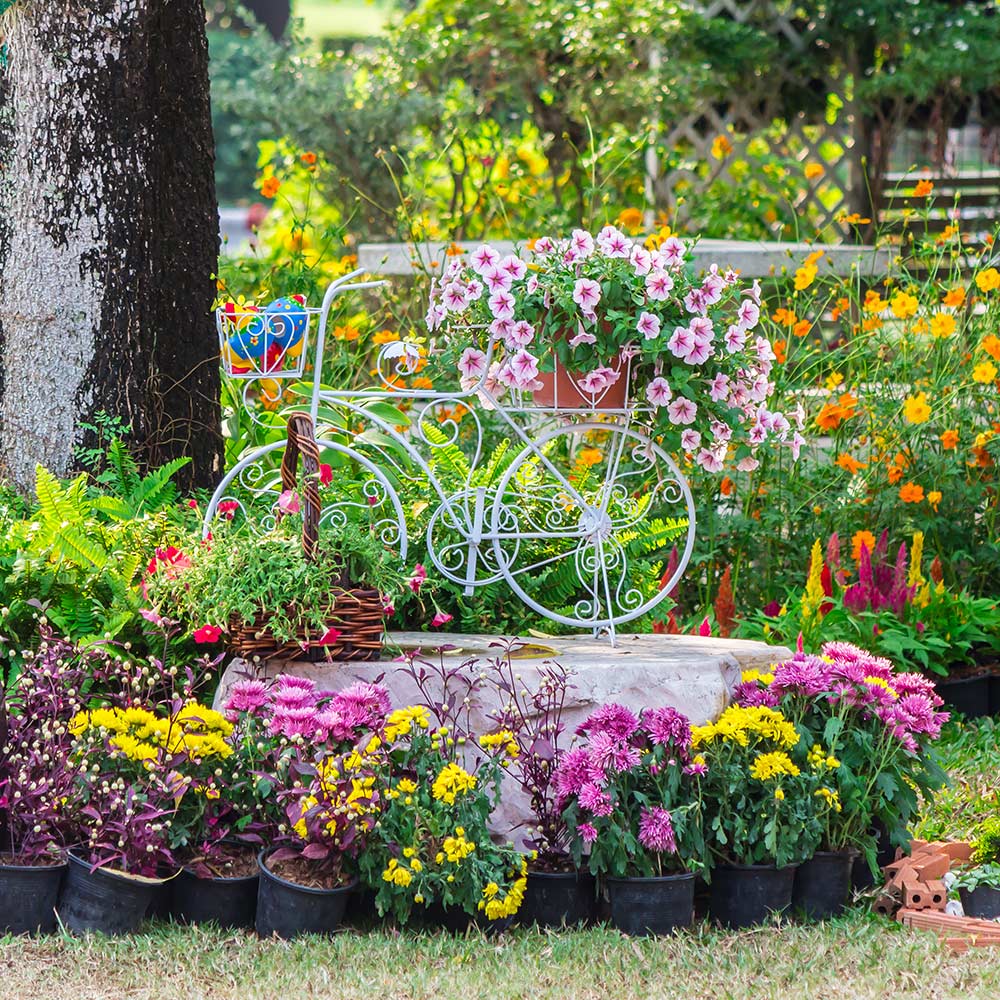
Last updated September 7, 2023
Enjoy your flower garden all season with these simple ways to get more with less. Enjoying your flower garden is a sensory experience. Growing flowers allows you to enjoy nature, which includes birds, butterflies, bees and other pollinators that naturally migrate to nectar from the blooms.
But enjoying your flower garden more doesn’t always mean more maintenance.
Let’s face it, we lead busy lives. So finding the right balance means making sure your flower garden gets the job done practically on its own, save for watering when Mother Nature doesn’t bring rain.
What you need to know is how to simplify gardening so you can enjoy more flowers. That way, you can enjoy your flower garden, relax, and take in the color, texture, depth and fragrance of your blooms.
Table of Contents
Select Low-Maintenance, Heat-Loving Flowers
Feed Slowly
Prune When Leggy
Water on a Schedule
Mulch
Use More Time-Saving Tools
Select Low-Maintenance, Heat-Loving Flowers
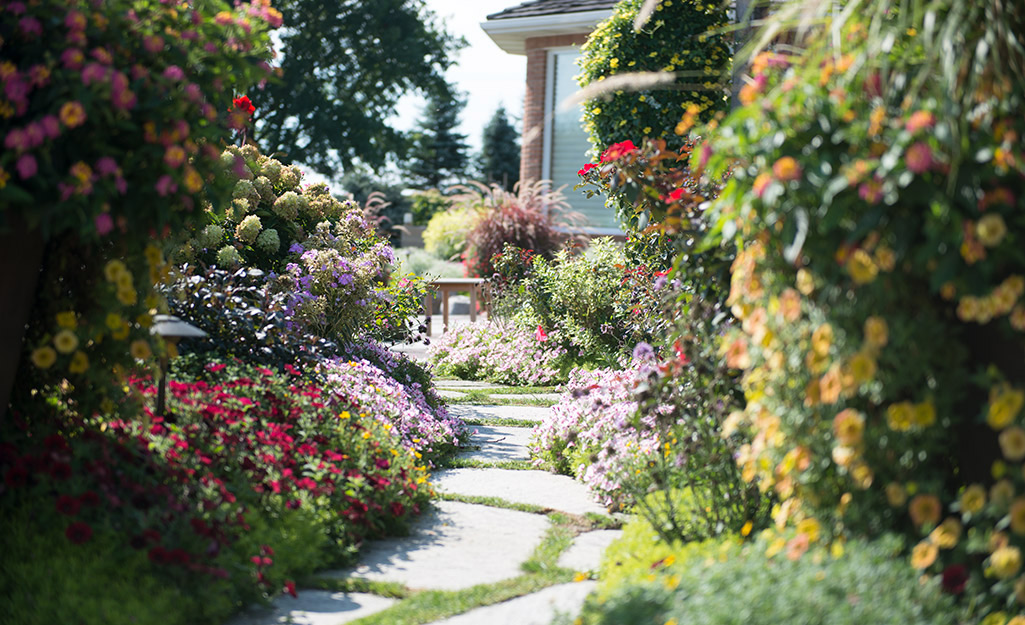
You’ll dramatically cut down on the amount of work in the garden when you remember this: Stick to easygoing, low-maintenance flowers that can take the heat. Then, extend your bloom time, not your workload, by adding varieties that flower from spring until frost. That way you’ll have more time to enjoy your flower garden from your bistro set.
Choose flowers for a cutting garden such as coneflower and easy-care roses, so you’ll always have a vase full of flowers inside your home. Easy-to-grow dipladenias bring endless seasonal color until first frost.
More heat-loving flowers include:
- Asters
- Cleome
- Coneflower
- Geranium
- Impatiens
- Lantana
- Liatris
- Marigold
- Sedum
- Yarrrow
- Veronica
- Zinnia
Feed Slowly

When you don’t have much time to garden, you’ll need this trick to help feed your flowers. Spread a slow-release granulated fertilizer that feeds slowly and steadily. Slow-release flower food can provide ample nutrients to flowers, plus, it lasts three to four months at a time.
Amending the soil with good quality organic compost is another way to keep plants healthy through the growing season. Build up the soil early in the season and side dress with compost in mid-summer.
Prune When Leggy

Low-maintenance gardening means pruning is minimal. However, there are times when you need your pruners and floral snips because trimming flowers helps them bloom more. Plus, getting close to your plants gives you an opportunity to scout for pests and diseases and treat them before they become major problems.
For instance, when your flowers experience a dry spell or extended periods of heat, you can help your blooms and extend the season by pruning or deadheading spent blooms. Calibrachoas, petunias and tickseed, for example, do better with a trim during these periods of the growing season. Marigolds are another flower that looks better when the spent blooms are removed.
Water on a Schedule

Connect your hoses or sprinklers to hose timers and your flower garden or containers will never get thirsty. They’ll receive water they need at the times you set, even while on vacation. Some timers allow you to hook up to four hoses for different areas.
Check out these other time-saving watering accessories.
Mulch
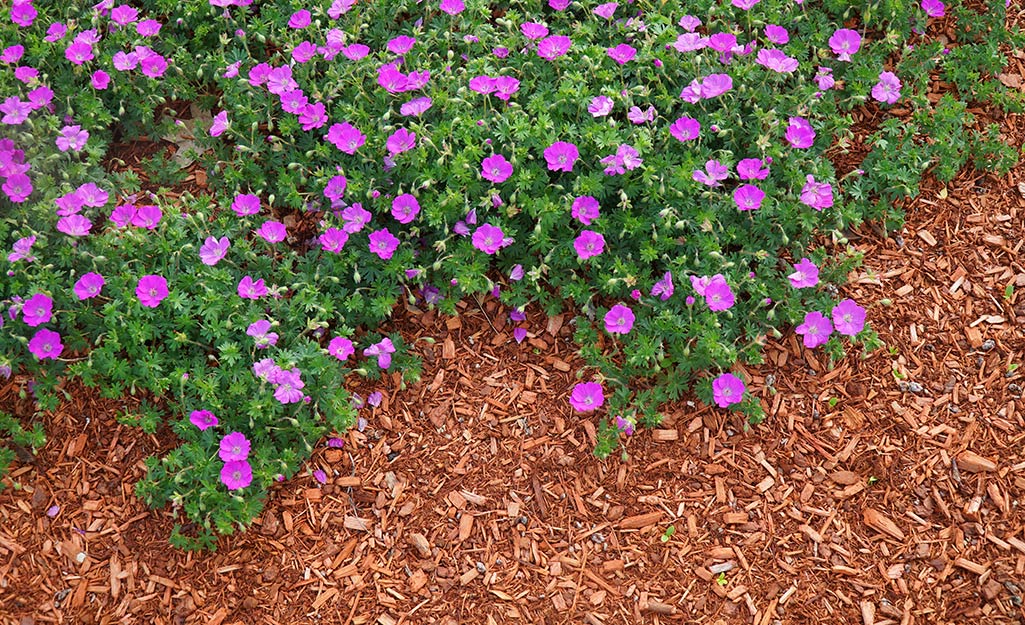
Mulch is the quiet workhorse of the garden. This multi-purpose product helps your landscape and garden by controlling weed growth, retaining moisture and protecting plants from pests and diseases.
In weather extremes, a layer of mulch will safeguard your plants from conditions ranging from blistering summer heat to freezing winter cold. And perhaps best of all, a blanket of mulch is the perfect way to finish up a garden space and make it look tidy.
A fresh layer of mulch also boosts your home’s curb appeal in an instant. See our mulch calculator to know how much you’ll need and read about the colors of mulch.
Use More Time-Saving Tools
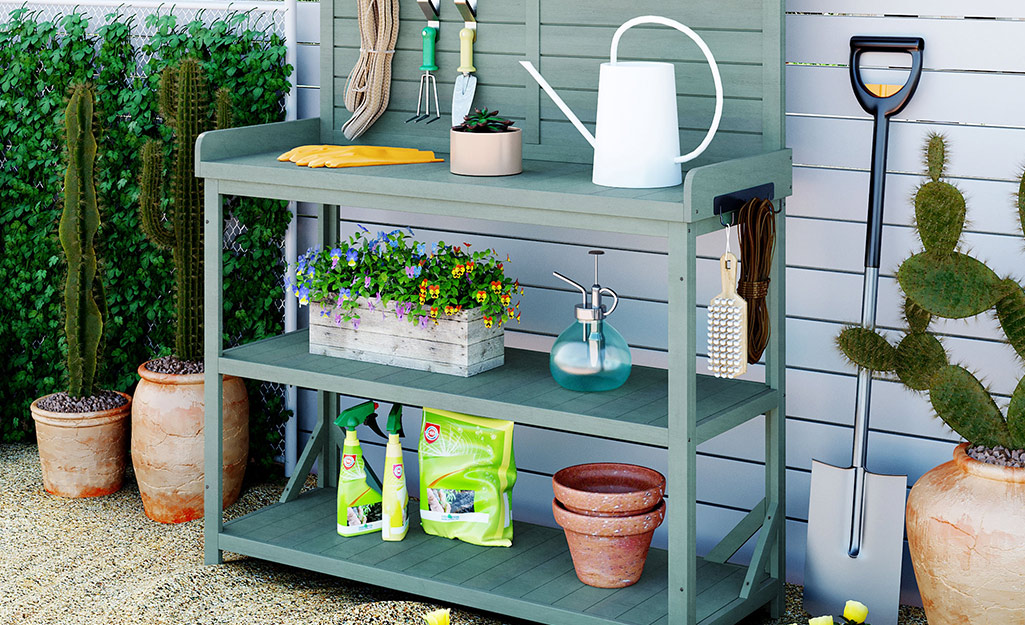
Save time in the flower garden by using tools from watering cans to plant protectors that help make gardening easier. See our list of favorite gardening tools and accessories below.
In addition to flowers, you may want to know how to enjoy your edible garden and ways to relax and enjoy your lawn.
Add Containers to Your Flower Garden
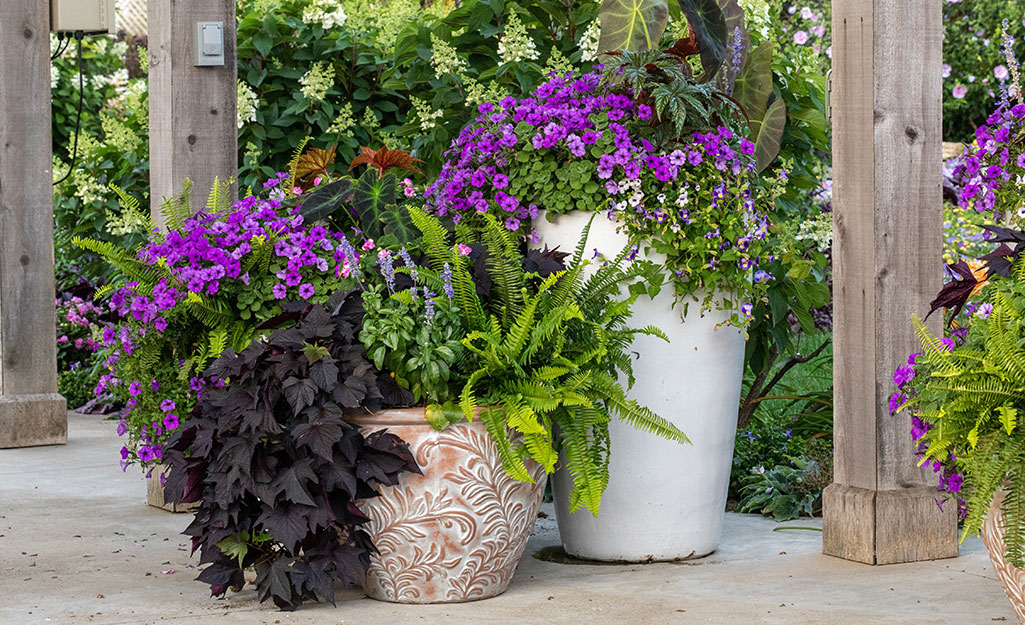
A container of beautiful plants is a garden within itself. If you want the look of a professionally designed container, use good design principles. These five important principles will have your containers looking like they came out of a magazine.
Don’t be afraid to go big. Large containers stand out in the landscape.
5 Keys to Container Design:
- Focal point. Every garden needs a centerpiece and containers are no different. Pick one dramatic or large plant as the main attraction. Fountain grasses and tropical plants such as elephant ears, banana trees, crotons and cannas are thrilling. Build your containers around these elements.
- Color. From the container you choose to the plants within it, color is the first thing people see. Use your pot and boldest plant to create unforgettable combinations. Play with plant arrangements at the store before you buy. For high impact, choose different shades of one color.
- Texture. Choose plants with leaves and flowers of varying size, shape and texture. The large leaves of an elephant ear mixed with coleus and trailing petunias are good examples of varying texture.
- Balance. Repeat plants around the container’s edge for symmetry. To achieve balance in the landscape, repeat container styles and color, too.
- Proportion. Large pots are dramatic, but only if the plants inside are big and bold. Use enough plants to fill your container so that their roots gently touch at planting time.
Tip: Fertilize plants throughout the growing season because constant watering leaches nutrients.
Whether you need the right planters, seeds or potting soil, The Home Depot delivers online orders when and where you need them.











